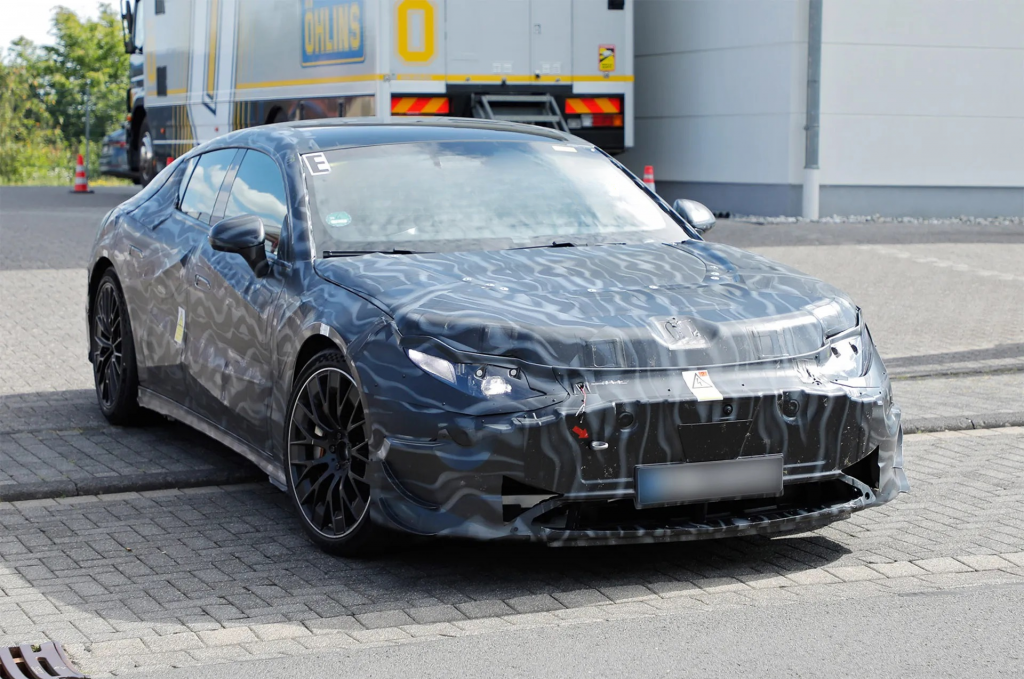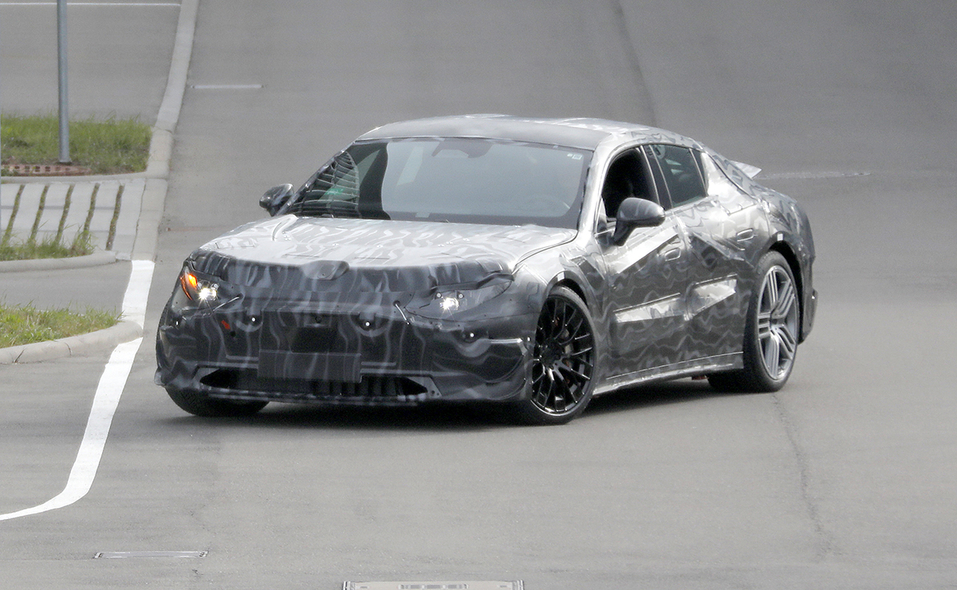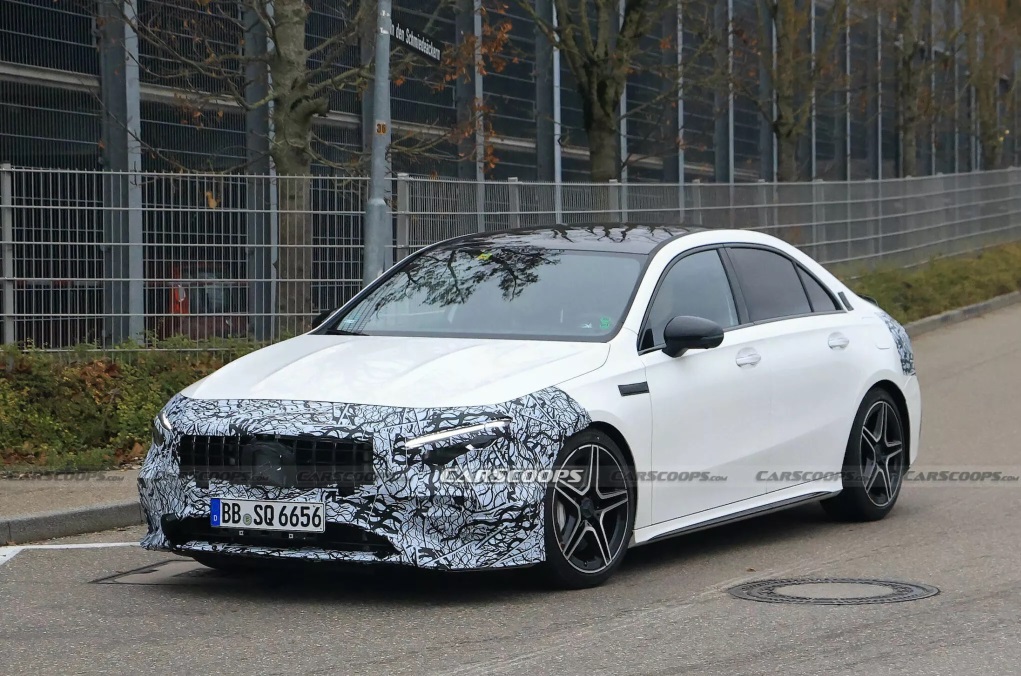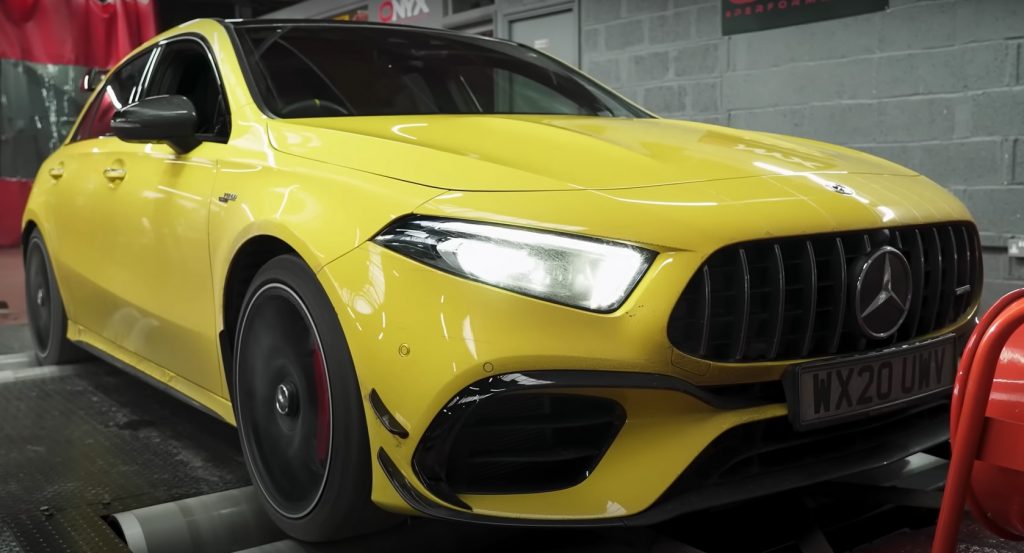
Daimler AG today presented its preliminary and unaudited figures for the Group and the divisions for the 2008 financial year. Daimler achieved EBIT of €2,730 million in 2008 (2007: €8,710 million). The decrease in Group EBIT was mainly the result of expenses totaling €3,228 million (2007: charges of €377 million) related to the investment in Chrysler and the lower earnings achieved by Mercedes-Benz Cars.
Another factor is that prior-year EBIT included higher gains realized on the transfer of portions of Daimler’s equity interest in EADS (2008: €130 million; 2007: €1,573 million). Daimler Trucks did not achieve its prior-year earnings, primarily due to the difficult economic situation in the United States and expenses incurred for the repositioning of its activities in the NAFTA region. The development of earnings was positive at Daimler Financial Services and the Mercedes-Benz Vans and Daimler Buses units.
Based on the divisions’ projections, the Group had forecast EBIT from continuing operations of more than €6 billion. This did not include special items from the revaluation of leased vehicles’ residual values at Mercedes-Benz Cars, the sale of real estate at Potsdamer Platz, the transfer of interest in EADS, the repositioning of Daimler Trucks North America, the new management model and effects related to Chrysler. Excluding those special items, Daimler achieved that goal.
Earnings in both years were affected by special items, as shown in the tables on pages 12 and 13.
For Daimler, the year 2008 consisted of a very good first half and a difficult second half. Dr. Dieter Zetsche, Chairman of the Board of Management of Daimler AG and Head of Mercedes-Benz Cars, stated at Daimler’s Annual Press Conference: “During the first half of 2008, we proved how well we perform under normal economic conditions. Many of our business operations were headed for very good results.”
Net profit for the full year amounted to €1.4 billion (2007: €4.0 billion) and earnings per share amounted to €1.41 (2007: €3.83).
The Board of Management proposes to the Supervisory Board that a dividend of €0.60 per share be distributed for the year 2008 (2007: €2.00 per share). Related to the number of shares entitled to a dividend at December 31, 2008, this constitutes a dividend distribution of €556 million (2007: €1,928 million). The main reasons for the dividend adjustment are the level of earnings achieved in 2008 and the difficulty in estimating the further development of the world economy and the automotive markets.
Unit sales and revenue
Despite extremely difficult market conditions, especially in the second half of the year, Daimler sold a total of 2.1 million vehicles in 2008, thus nearly equaling the prior-year level. Daimler’s total revenue amounted to €95.9 billion in 2008, compared with €99.4 billion in the prior year; adjusted for exchange-rate effects, there was a decrease of 1%.
Free cash flow and liquidity
Due to the crisis-like development in the second half of the year, the free cash flow of the industrial business for the full year of minus €3.9 billion was not satisfactory (2007: plus €7.6 billion). This was primarily caused by the unexpected sharp decrease in unit sales at Mercedes-Benz Cars in the fourth quarter. Despite cuts in production, inventory levels remained high. In addition, there were disproportionately high payments to suppliers because many invoices regularly have to be paid at the end of the year and trade payables from the third quarter had to be settled. The reduction in the free cash flow was also caused by the temporarily increased investment in the new E-Class and in technologies for the reduction of CO2 emissions, as well as by the acquisition of a 10% equity interest in Kamaz, a Russian truck manufacturer.
The Daimler Group has a good level of liquidity. It decreased by €9.1 billion to €8.0 billion in 2008. The unusually high liquidity at December 31, 2007 was related to the sale of a majority interest in Chrysler. As a result of the decrease, a level of liquidity appropriate to the Daimler Group has been achieved.
Workforce
At December 31, 2008, Daimler employed a workforce of 273,216 people worldwide (2007: 272,382). Of that total, 167,753 were employed in Germany (2007: 166,679) and 22,476 in the United States (2007: 24,053). The number of apprentices and trainees at year end was 9,603 (2007: 9,300).
For the year 2008, the Board of Management has decided on a discretionary profit-sharing bonus of €1,900 for the approximately 118,000 eligible employees of Daimler AG. The bonus will be paid out with the salaries for the month of April 2009. With this profit sharing, the Board of Management is honoring the employees’ contribution to the operating profit achieved in 2008.
In order to secure the Group’s cash flows in 2009, however, contributions will be required from all sections of the workforce. The Board of Management has therefore decided that the wage increases for 2009 agreed upon in collective bargaining for the approximately 140,000 employees covered by such agreements will only apply to that portion of wages covered by collective bargaining and not to the portion of wages additionally paid by Daimler outside the agreement. This possibility is foreseen by the agreement signed by management and employee representatives in 2004, “Securing the Future 2012.” Furthermore, the Board of Management has decided not to increase the remuneration of the Group’s IC managers in 2009. An additional measure taken in this context is the suspension of the employee shares program in 2009.
Investment in safeguarding the future
Despite the difficult environment, the Daimler Group invested €8 billion to secure its future, €1 billion more than in the prior year.
Daimler’s expenditure for research and development increased to €4.4 billion last year (2007: €4.1) billion. At Mercedes-Benz Cars, total R&D spending increased from €2.7 billion in 2007 to €3.0 billion. Daimler Trucks’ R&D expenditure amounted to €1.1 billion (2007: €1.0 billion).
A key area of Daimler’s research and development activities in 2008 was working on new, particularly fuel-efficient and environmentally friendly drive technologies. In order to reduce CO2 emissions even further and to offer vehicles compatible with the needs of the future over the long term, Daimler is working on the optimization of conventional drive technologies and the reduction of vehicle weight as well as on alternative drive systems such as fuel cells and electric vehicles.
Daimler invested €3.6 billion in property, plant and equipment in 2008 (2007: €2.9 billion). This investment focused on new vehicle models and new drive systems. Of the total capital expenditure on property, plant and equipment, €2.5 billion was invested in Germany.
The divisions in detail
Mercedes-Benz Cars, comprising the brands Mercedes-Benz, Maybach, smart and AMG, sold a total of 1,273,000 vehicles in 2008 (2007: 1,293,200). The Mercedes-Benz brand delivered 1,125,900 automobiles (2007: 1,180,100), while the smart brand significantly increased its unit sales to 139,000 cars (2007: 103,100).
Due to the market development, but in particular also to the upcoming E-Class model changeover, revenue decreased by 9% to €47.8 billion.
The division’s EBIT of €2,117 million in 2008 was substantially lower than its prior-year earnings of €4,753 million; in the fourth quarter of 2008, Mercedes-Benz Cars’ loss amounted to €359 million compared with a profit of €1,426 million in Q4 2007. While EBIT continued to develop very positively in the first six months of 2008, the abrupt slump in demand in the NAFTA region and in major European markets led to substantial burdens on earnings as of the third quarter.
There were additional burdens on earnings from a shift in demand towards smaller models and from exchange-rate effects. The revaluation of leased vehicles’ residual values necessitated by the significant weakening of the world economy in the second half of 2008 resulted in impairment charges of €465 million. Sales incentives and higher raw-material prices also had a negative impact on operating profit. These burdens on earnings were only partially offset by further efficiency improvements.
Daimler Trucks was once again the world’s largest manufacturer in the segment of medium- and heavy-duty trucks last year, selling 472,100 vehicles and posting revenue of €28.6 billion (2007: 467,700 units and €28.5 billion). The 1% increase in unit sales was primarily due to higher volumes in Brazil, Indonesia and the Middle East. On the other hand, unit sales decreased as a result of the difficult market situation in the United States, Canada and Japan.
The division achieved EBIT of €1,607 million (2007: €2,121 million). The reduced operating profit was mainly due to lower vehicle deliveries caused by the ongoing difficult economic situation in the NAFTA region. Other factors with a negative impact on earnings were exchange-rate effects and increased raw-material prices. In addition, measures taken for the repositioning of Daimler Trucks North America led to expenses of €233 million. These measures are expected to lead to annual earnings improvements of US $900 million as of 2011.
Trucks Europe/Latin America increased its unit sales by 6% to 170,100 vehicles, setting a new sales record. For Trucks NAFTA, unit sales decreased by 12% to 104,300 vehicles. However, Trucks NAFTA defended its leading position for Class 8 trucks in the NAFTA region with a market share of 30.9%. Trucks Asia sold a record 197,700 trucks and buses last year, 5% more than in 2007, with increased unit sales in Indonesia, the Middle East, Eastern Europe and Turkey.
In December 2008, Daimler entered into a strategic partnership with Russian truck manufacturer Kamaz, secured with a 10% equity interest in the company. Cooperation with Kamaz will help Daimler Trucks to penetrate the Russian volume market.
Daimler Financial Services developed positively in 2008. Its worldwide contract volume of €63.4 billion was 7% above the prior-year figure. Several companies were consolidated for the first time in 2008, primarily in Asia and Eastern Europe. Excluding this effect and adjusted for exchange-rate effects, growth in contract volume amounted to 5%. New business increased compared with the prior year by 7% to €29.5 billion.
Daimler Financial Services posted EBIT of €677 million, significantly surpassing the prior-year result of €630 million. The main positive effects on earnings came from the increased contract volume. Increased cost of risk had a negative impact on EBIT.
Vans, Buses, Other primarily comprises the Mercedes-Benz Vans and Daimler Buses units as well as Daimler’s equity interests of 22.5% in the European Aeronautics Defence and Space Company (EADS), 19.9% in Chrysler Holding LLC and 28.4% in Tognum AG. These equity interests are included in the consolidated financial statements using the equity method of accounting with a three-month time lag.
Despite the backdrop of a difficult market environment in the second half of 2008, Mercedes-Benz Vans nearly matched its record unit sales of 2007, selling 287,200 vehicles worldwide (2007: 289,100).
Daimler Buses sold 40,600 buses and chassis of the brands Mercedes-Benz, Setra und Orion in 2008, once again surpassing the prior-year number (2007: 39,000). The unit therefore succeeded in defending its worldwide market leadership in the segment of buses above 8 tons in all of its major markets.
The revenue of Vans, Buses, Other increased by 6% to €15.0 billion, primarily due to the growth in unit sales at Daimler Buses.
The EBIT posted for 2008 by Vans, Buses, Other amounted to minus €1,239 million (2007: €1,956 million). Mercedes-Benz Vans achieved EBIT of €818 million due to its good revenue situation (2007: €571 million). Daimler Buses’ EBIT improved from €308 million to €406 million as a result of its strong unit sales. Daimler’s share of the earnings of EADS amounted to €177 million (2007: €13 million).
The reduction in the segment’s EBIT was primarily due to special items, including the negative contribution to earnings from Chrysler and other charges related to that equity interest. Another factor is that prior-year earnings included higher gains on the transfer of interest in EADS (2008: €130 million; 2007: €1,573 million). The sale of real estate at Potsdamer Platz led to a gain of €449 million in 2008.
The positive development of earnings at EADS was primarily due to Airbus and Eurocopter, but the Astrium business unit and Defence and Security were also very successful in their market segments. Earnings were burdened by the weakness of the US dollar and the challenges faced by the A400M program.
The equity-method accounting of Daimler’s 19.9% interest in Chrysler reduced the Group’s EBIT for the year 2008 by €1,390 million (2007: charge of €377 million). In addition, the impairment of loans and other Chrysler-related assets led to charges of €1,838 million.
Outlook
The great uncertainty about the duration and extent of the global economic downturn is connected with substantial risks for the development of the world’s automotive markets.
From today’s perspective, global demand for automobiles could decrease by another 10% in 2009 compared with the prior year. In the world’s triad markets, further significant falls in overall unit sales are anticipated; falling unit sales are also to be expected in most of the emerging markets.
Prospects for the major markets for commercial vehicles are also unfavorable. The triad markets are likely to suffer a substantial drop in demand. And in Western Europe, the commercial vehicle business is at the beginning of a distinct cyclical downturn phase, which will particularly affect sales of medium and heavy-duty trucks. The global economic slowdown will dampen demand for commercial vehicles also in the growth regions of Asia, Eastern Europe and Latin America. In the major emerging markets therefore, distinct market contraction is expected in all commercial-vehicle segments for the first time in many years.
Mercedes-Benz Cars cannot avoid the expected weakness of key sales markets and in particular of those market segments important to the unit. Total unit sales in the year 2009 are therefore likely to be below the level of the year 2008. As a result of the weakness of demand in major markets, the Daimler Trucks division anticipates a significant decrease in unit sales in 2009. Mercedes-Benz Vans and Daimler Buses will not match their high unit sales of the prior year.
On the basis of assumptions concerning the development of the automotive markets and the divisions’ planning, the Daimler Group expects total unit sales to decrease significantly in 2009. However, due to innovative and high-quality new products and an attractive model range, the Group assumes that its divisions will be able to further strengthen their market positions.
From the starting point of the currently projected unit sales, the Daimler Group’s revenue is likely to be lower than in 2008 in all of the vehicle divisions.
Further substantial burdens are anticipated on the earnings of the Group and its divisions. A more detailed statement on earnings will only be possible later in the year, when the development of the world economy and the automotive markets can be better assessed.
In order to improve the earnings situation on a sustained basis and in all divisions, Daimler has continued and intensified its actions designed to reduce costs and improve efficiency. These actions include the adjustment of production and employment levels by means of flexible working-time models and short-time work, the reduction of inventories, the limitation of expenses and the optimization of refinancing instruments.
Dr. Dieter Zetsche: “The Daimler Group is in a relatively strong position to meet this crisis. We have the opportunity not only to overcome this exceptional situation, but to emerge from it stronger. We are going to seize this opportunity.”
Annual Report 2008 and other information related to the 2008 financial statements will be published on the Internet on February 27. The Annual Report will also be available in printed form from the middle of March onwards.
|
Amounts in millions of €
|
2008
|
2007
|
|
Mercedes-Benz Cars
Revaluation of residual values Financial support for suppliers Adjustment of a pension plan |
(465)
– 84 |
–
(82) – |
|
Amounts in millions of €
|
2008
|
2007
|
|
Daimler Trucks
Repositioning of Daimler Trucks North America Adjustments of pension plans and healthcare benefits Sale of real estate in Japan |
(233)
29 – |
–
86 78 |
|
Amounts in millions of €
|
2008
|
2007
|
|
Vans, Buses, Other
Sale of real estate (2008: Potsdamer Platz; 2007: Wohnstà¤tten Sindelfingen) Gains related to the transfer of shares in EADS Restructuring program at EADS At-equity result from Chrysler Impairments of loans and other Chrysler-related assets |
449
130 – (1,390) (1,838) |
73
1,573 (114) (377) – |
|
Amounts in millions of €
|
2008
|
2007
|
|
Reconciliation
New management model |
(247)
|
(256)
|



























